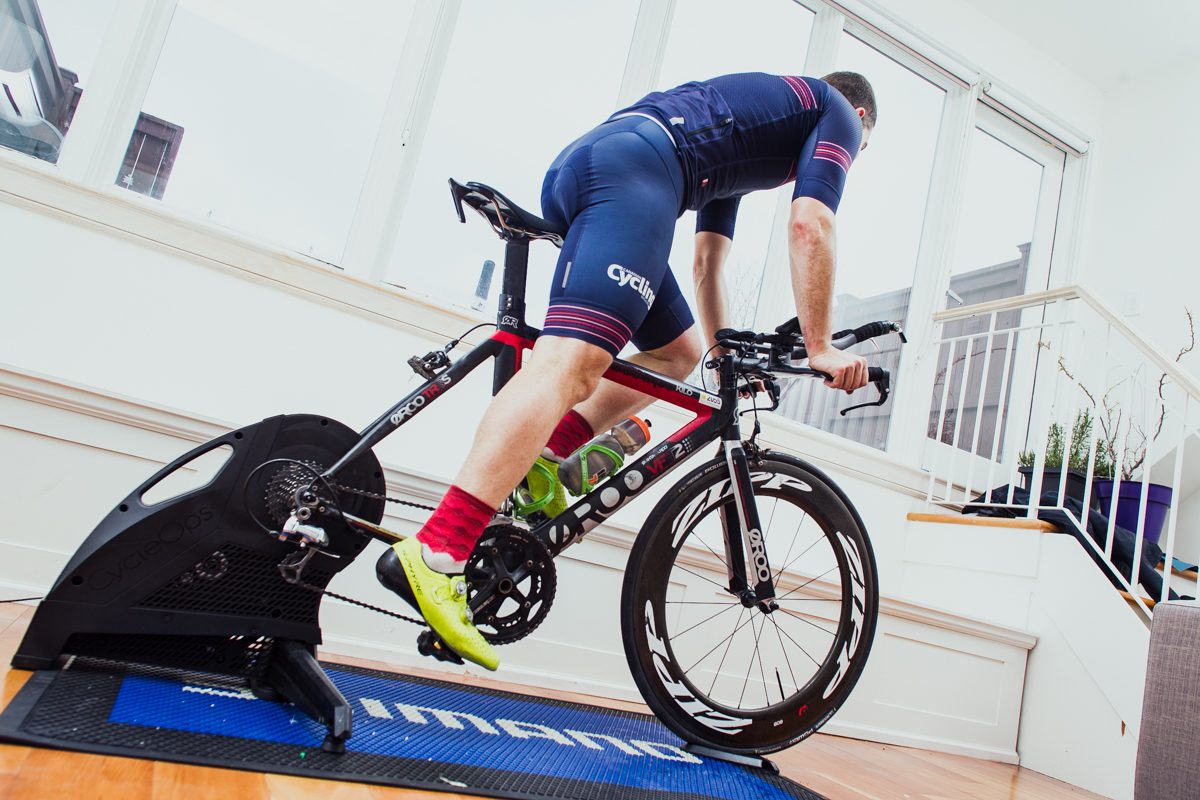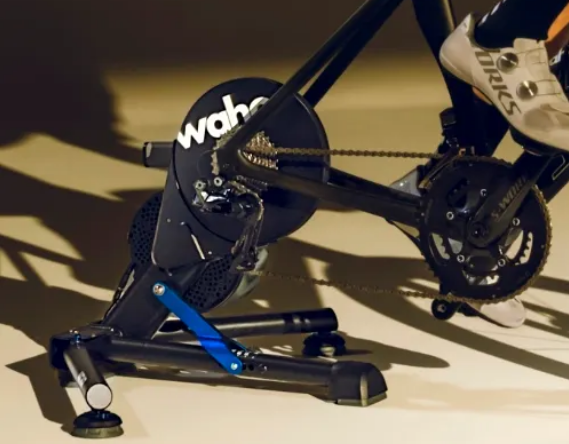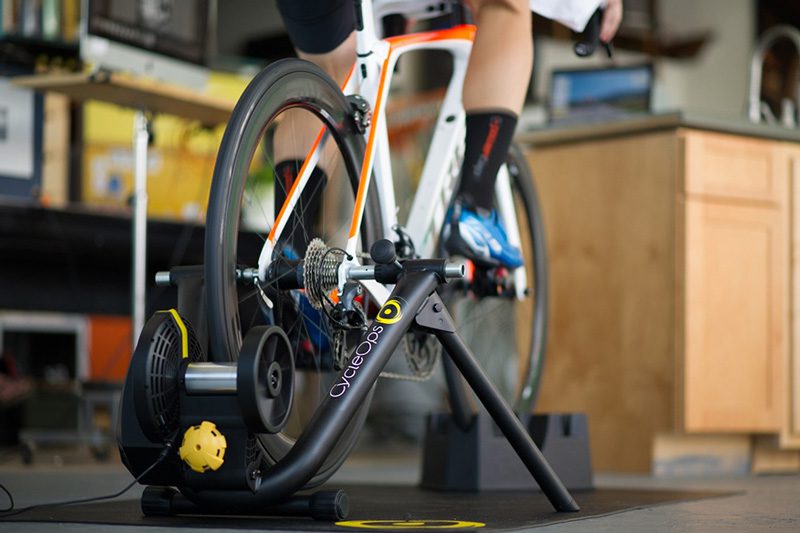7 keys for a successful winter of indoor triathlon bike training
Follow these tips to get the most out of your riding this winter

Indoor cycling training is inevitable for athletes living in colder climates – and makes sense for athletes regardless of where they live because it provides opportunities to build fitness while practicing important skills. Instead of worrying about weather and traffic, the focus can be on form, cadence and recruiting different muscle tissues to develop strength. While getting on the trainer for an hour is exhilarating, athletes training for an early season long course event could be riding from three to six hours, developing their resilience and mental strength in the process. That much time on the trainer can be daunting, so here are some tips for getting the most out of your indoor ride:
Set Up
Whether you use a smart trainer, dumb trainer or rollers, the best scenario is to train on your own bike. A spin bike at the gym is fine for aerobic fitness and some strength and drills, but is limited in how much it will prepare you for outdoor riding. A “dumb trainer” requires manual gear shifting to replicate the speed and power prescribed in your workout. A “smart trainer” controls the tension to your bike with a program file that simulates geographic terrain, or a custom workout, and can provide power, cadence and speed metrics.

Road or Tri bike?
If you have the choice, should you use a road bike or tri bike on the trainer? That depends on what you are training for. Triathletes may want to ride a road bike in the foundation phase of training to recruit and strengthen the glutes and hips. As training builds, switching to the tri bike activates different hip muscles and builds endurance in the aero position.
Outdoor vs Indoor timing
Be aware that your bike may not feel as comfortable riding on the trainer as it does outdoors – you aren’t coasting or moving around on the bike and don’t need to engage your core to stay balanced. Every 50 minutes on the trainer equals an hour outdoors because of the added difficulty. It may take a few rides to establish a comfortable set up with your technology syncing, a fan for cooling, towels for mopping your face and keeping the sweat off the cockpit, and you may need to change the type of shorts (chamois) you wear to prevent chafing. Using an older pair of shoes may be more forgiving for hot, sweaty feet.
Technology
Regardless of what trainer you use, software programs such as FulGaz, Zwift, TrainerRoad or Rouvy are a great training tool and can be used in different modes to suit your technology and your workout. When synced with a smart trainer and your sport watch, the details of your workout can be captured and delivered straight to your Training Peaks account for review and tracking. The challenge here is to avoid being entirely dependent on your technology working to get a workout done. When the syncing is not happening – don’t let that sink your workout and just go old school. Done is better than perfect.
Workouts
Training plans are put together to progress through phases from base to race over time with recovery built in. The structure of each workout begins with a warmup that usually includes a short ramp up of intensity to prime your legs, lungs and heart before getting into the main set of the workout. The main set is designed to practice certain skills, followed by a steady ride and/or cool down, which is just as important for recovery and for enhancing your resilience.
Athletes who are using software training programs such as Zwift with a smart trainer have an advantage if their coach creates a custom workout file because they can just get on and ride without gear changes. That program with a dumb trainer can also be effective if you are honest about increasing the intensity as prescribed. Where technology can undo your workout easily is when you engage with any of the software’s features such as pace partners, sprint or time trial challenges, king/queen of the mountain climbs and your own PB hologram when you are supposed to be doing a steady zone 2 effort. Remembering the purpose of each workout can help restrain competitive urges that unintentionally blow up your workout.

Comfort on the Long Rides
Bike fit, if done properly, will be specific to the athlete’s ability and their intended use of the bike, taking comfort and aerodynamics into account. Even with the best set up, riding on the trainer will probably not feel the same because we ride differently indoors. Before starting to adjust your bike or saddle, consider trying a different chamois and paying more attention to your posture on the bike.
When we don’t have to balance, steer and look ahead on the road, our form changes, especially when tired or bored. Discomfort on the bike can be a result of not engaging our core, letting our upper body collapse and our head drop forward. It pays to do the occasional body scan to see if you are hunching your shoulders or holding tension in your arms and hands. A few months of poor posture on the bike can lead to muscle tension and exaggerated soreness, especially when we return to riding outdoors.
Overheating, bonking and under-hydrating can make indoor riding even more uncomfortable. Taking the time to refill your bottles or have a washroom break will help re-set you mentally and physically. For long rides, break it down into 60-minute segments and choose a specific focus for each.
It can help to join an online group ride, watch a movie, listen to playlists, or explore a new route in Zwift to alleviate the boredom that can come with those long indoor training rides. Keep in mind that these distractions won’t be available to you in a race, so getting used to being inside your own head is worth practicing as well.
Post-Ride
Take a few minutes to do a few stretches while you wipe down your bike (don’t let your sweat ruin the components!) and gather your empty bottles. Focus on hip flexors, quads, glutes and hamstrings to prevent tightness that can lead to lower back pain. Be sure to drink another bottle of fluids after your ride and get that recovery shake or protein snack in within the next 30 minutes.
Dr. Cindy Lewis-Caballero is a Chiropractor, Triathlon and Run Coach, Personal Trainer and Professional Triathlete. She provides Chiropractic Services for CL Performance Training through Cindy Lewis Chiropractic Professional Corporation.
Sandie Orlando is a frequent contributor to Triathlon Magazine Canada, an age group triathlete, coach, writer and marketing/communications manager for CL Performance Training.
